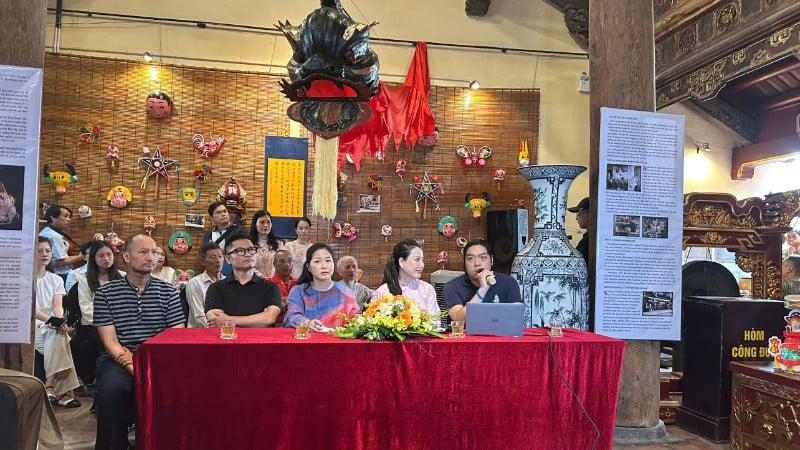
Restoring cultural value from ancient lion head
In the ancient space of Kim Ngan communal house (42-44 Hang Bac, Hanoi ), art researcher Kevin Vuong organized the exhibition and discussion "Our Moon" - recreating the traditional mid-autumn atmosphere of the Northern region and applying heritage in contemporary life.
Kevin Vuong is an independent art researcher, currently living in Hanoi. He has received many prestigious awards and scholarships, including the Media Aptech Best Short Film Award in 2010 and two scholarships in Germany.
In addition, he also made many contributions in the cultural field, especially translating and publishing foreign literary works such as "Grimm's Fairy Tales" and "The Nutcracker and the Mouse King".
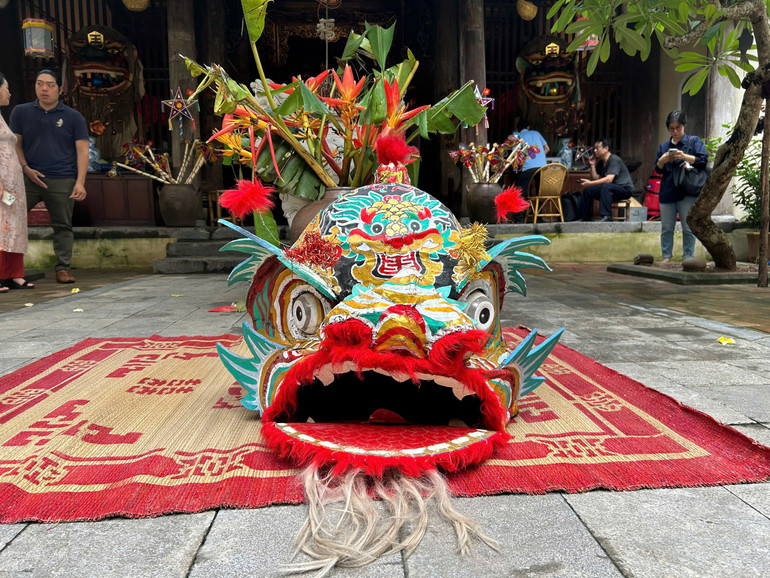
The Northern lion head from 1932 is kept in Phuong Ban village (Chuong My, Hanoi).
“Our Moon” is a project to recreate mid-autumn festival toys that he conceived and implemented in 2020. In this exhibition at Kim Ngan communal house, Kevin Vuong introduced the results of his research on the head of a Northern lion.
The Northern lion head is a traditional Mid-Autumn Festival toy, associated with the childhood memories of many generations. Unlike the Southern lion head which was influenced by the Chinese, the Northern lion head bears the strong mark of Vietnamese creativity, especially the carp eyebrows, a symbol of the rice civilization.
After many changes of time, the image of the Northern lion head has gradually faded away and is easily confused. Under the research and restoration of art researcher Kevin Vuong, based on documents from the French Museum and the Vietnamese School of the Far East, the Northern lion head made of bamboo, Do paper, and lacquer has been vividly and realistically restored and displayed at the exhibition "Our Moon".
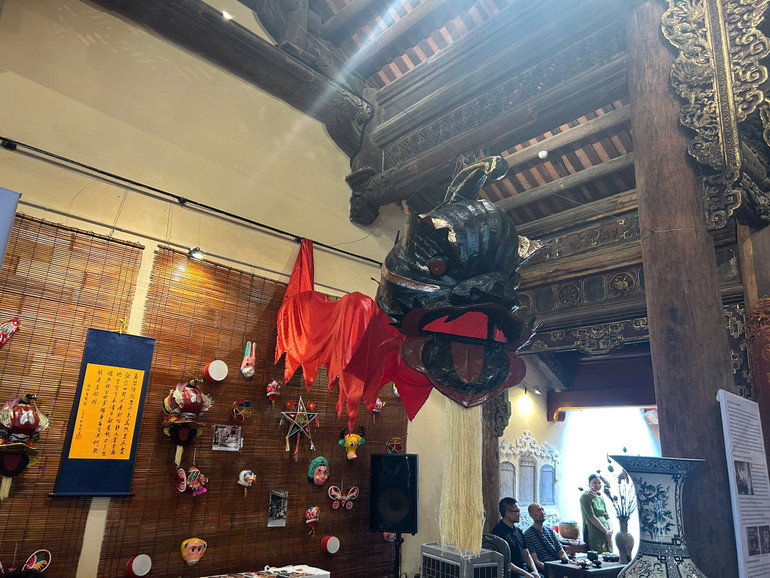
To have this exhibition, art researcher Kevin Vuong spent 5 years researching, collecting and systematizing his own documents about the Northern lion head.
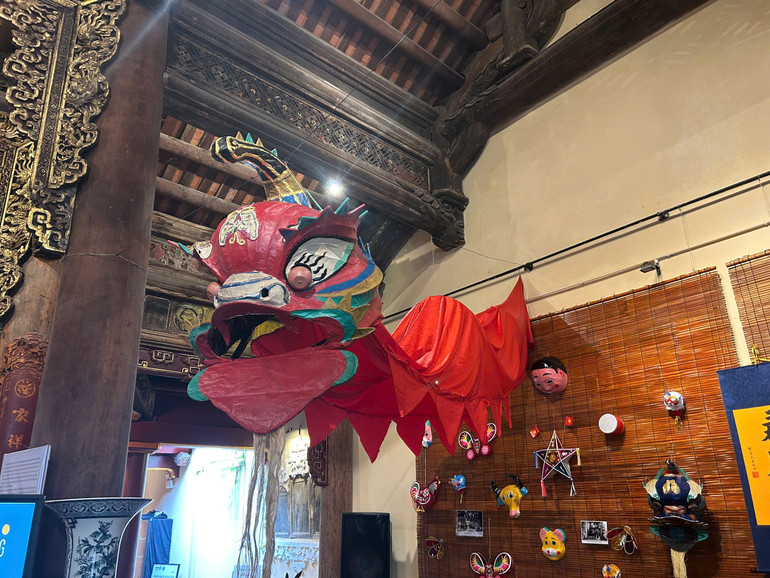
The head of the Northern lion is recreated in the exhibition.
Recalling the difficulties in the process of finding materials and research, art researcher Kevin Vuong said: “The biggest difficulty in carrying out the project was finding the image of the Northern lion head, a characteristic of the Northern Mid-Autumn Festival but has gradually faded away. Currently, in many festivals, weddings or opening events, the Southern lion head, which originated from the Chinese culture in Cho Lon, is more popular. I went to many places, from the Old Quarter in Hanoi, Hang Ma to the suburbs of Hanoi such as Ha Dong, Ha Tay, Nam Dinh , places where there used to be villages specializing in making Northern lion heads. But now, most of them have stopped or switched to producing other products, so finding traces of this traditional craft is really difficult.”
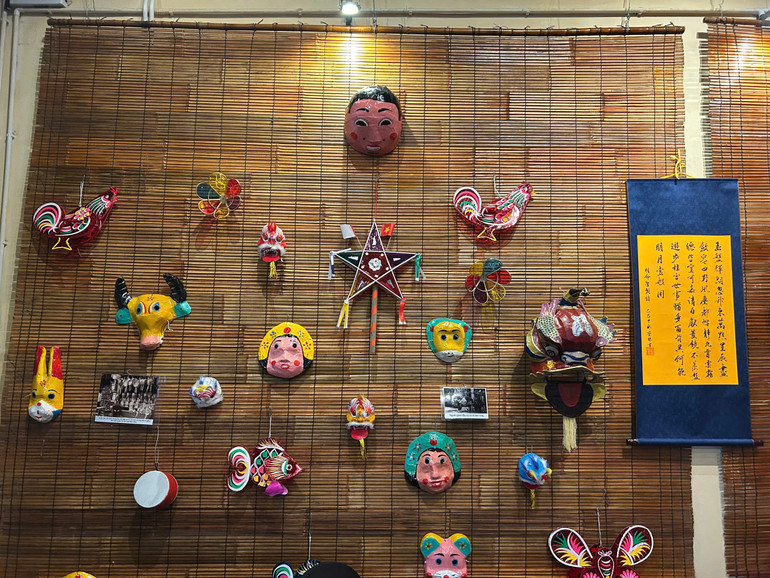
Having worked abroad, Kevin Vuong took the opportunity to research and learn about ancient Vietnamese lion heads kept in major museums.
At the seminar, researcher Kevin Vuong shared that in 2021, while working in France, he went to a large museum there to research an ancient Vietnamese lion head. That lion head was brought to France in 1931, at that time, French staff from the French School of the Far East purchased many Mid-Autumn Festival toys to bring to France for display. After that, along with many other Asian artifacts, the lion head was kept in the museum's warehouse until today and has never been displayed.
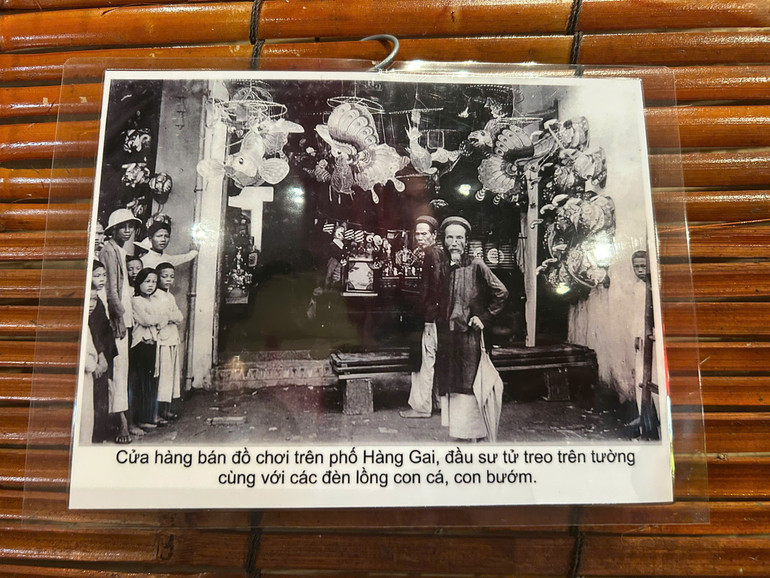
“Although I have certain materials and knowledge, recreating the Northern lion head is still very difficult. Most of the traditional craftsmen are no longer practicing the profession, and those who still do it are familiar with creating the Southern lion head. It was not easy for them to create the Northern lion shape as I wanted. I had to work remotely and directly at the workshop, continuously experimenting and learning from many different models. Only after many discussions and edits could I work with them to come up with the shape of a Northern lion head like today,” art researcher Kevin Vuong said about the challenges of recreating the ancient lion head.
Spreading heritage values
Dr. Nguyen Hong Ngoc, lecturer at UIT ( Ho Chi Minh City National University), expressed his impression of Kevin Vuong's research.
She believes that the author has gathered many valuable documents in the country, especially documents from foreign sources. There are data that seem impossible to recover, almost lost in their original form, but researcher Kevin Vuong has done it.
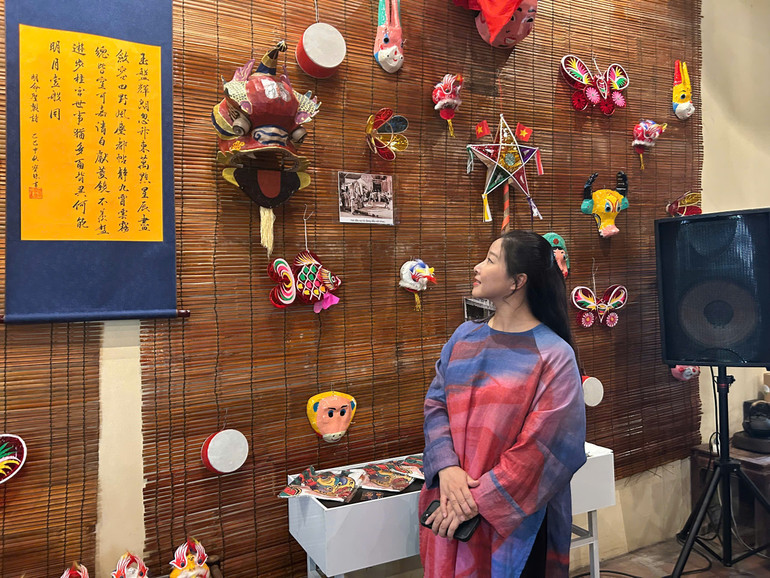
Talking about the application of heritage in contemporary life, Dr. Hong Ngoc shared: “In teaching, I always hope that students will have direct access to the original culture of the Vietnamese people. When the national spirit is imbued into each design product of young people, that is the best way to preserve and revive heritage. Particularly with the Northern lion head, the valuable documents that Kevin Vuong and researchers have collected will be available for students to exploit. From there, students can create new designs, carrying the cultural spirit and typical shaping elements."
“Researcher Kevin Vuong has successfully recreated and preserved the heritage in its original state, which is extremely valuable when the heritage is gradually being lost in daily life. And our job is to fully absorb those original values and convey them into contemporary designs. Thereby, the heritage will be breathed new life into today's life, instead of being wrapped up and "frozen" in the museum", Dr. Hong Ngoc emphasized.
In particular, in the space of Kim Ngan communal house, visitors also met Mr. Nguyen Xuan Hien, the only artist still attached to the ancient lion dance of Phuong Ban village (Chuong My, Hanoi). Here, Mr. Hien directly recreated the ancient lion dance passed down by his father, bringing to the audience vivid moments of the ancient Mid-Autumn Festival.
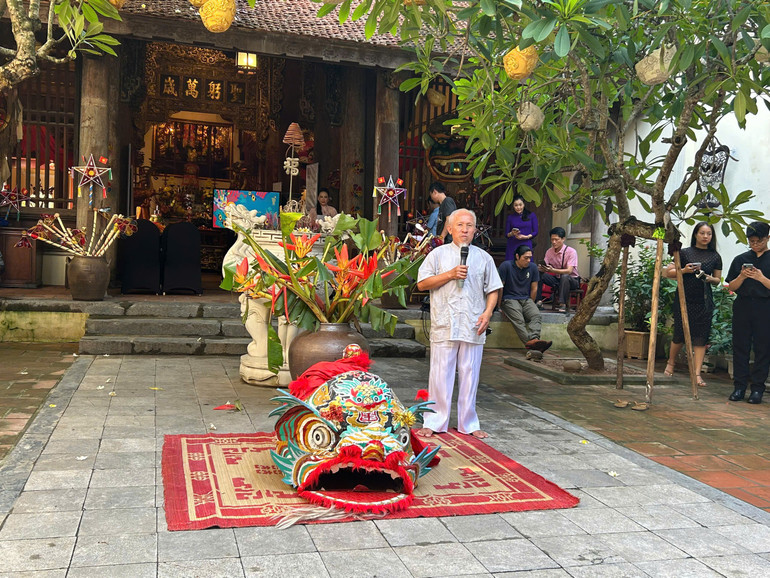
Mr. Hien shared: “The lion head I brought today is the only remaining artifact of my village. It was made in 1932, passed down through three generations in my family, from my grandfather, to my father and then to me. The last time this head was maintained was 20 years ago. Few people still follow this profession now, every time they have a little money, they spend it on repairing and preserving the lion head, so few people can follow it for a long time. When I received the invitation to Kim Ngan communal house to perform an ancient lion dance, I was very happy. I am happy that the tradition of our ancestors has been cared for and even happier to see young people contributing to spreading and preserving those ancient traditions.”
In addition to the ancient lion head, the exhibition also recreates the traditional Mid-Autumn Festival tray with all the flavors of autumn: moon cakes, fruits, dough animals, baby lion heads, and fruits carved according to ancient legends. All of this creates a nostalgic Mid-Autumn Festival space in the ancient communal house grounds.
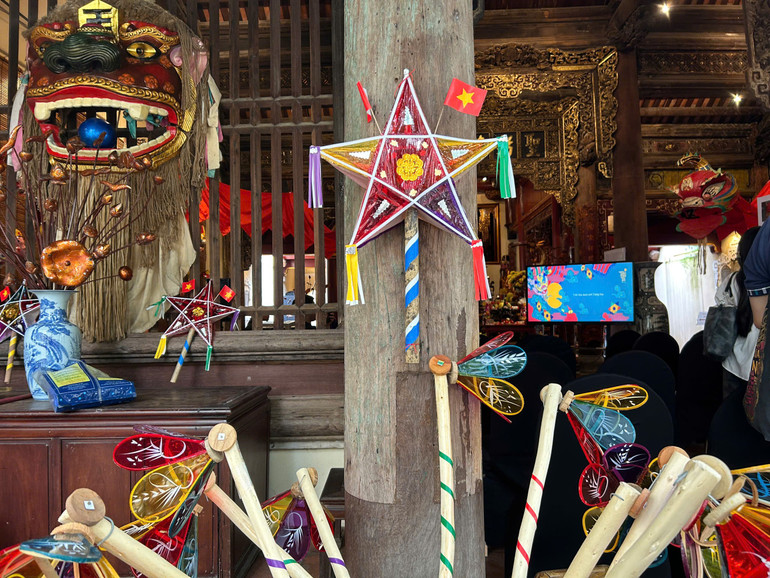
Visiting the exhibition and discussion “Our Moon”, writer Le Phuong Lien could not hide her emotions. When looking at the old lion head, her childhood memories came flooding back.
Writer Le Phuong Lien shared: “As someone who is very attached to and interested in the Mid-Autumn Festival, I learned about the exhibition 'Our Moon' through social networks. As a child born and raised in Hanoi's Old Quarter, my memories of the Mid-Autumn Festival are associated with the vibrant colors, the trays of food prepared by the ladies, and especially the exciting lion dances throughout the streets. I was even more moved when I remembered my childhood friends, who used to dance the lion beautifully but they sacrificed their lives in the resistance war. To me, the lion dance is not only a festival activity, but also contains the spirit of bravery and heroism like warriors, and at the same time cultivates personality, especially for children, especially boys.”
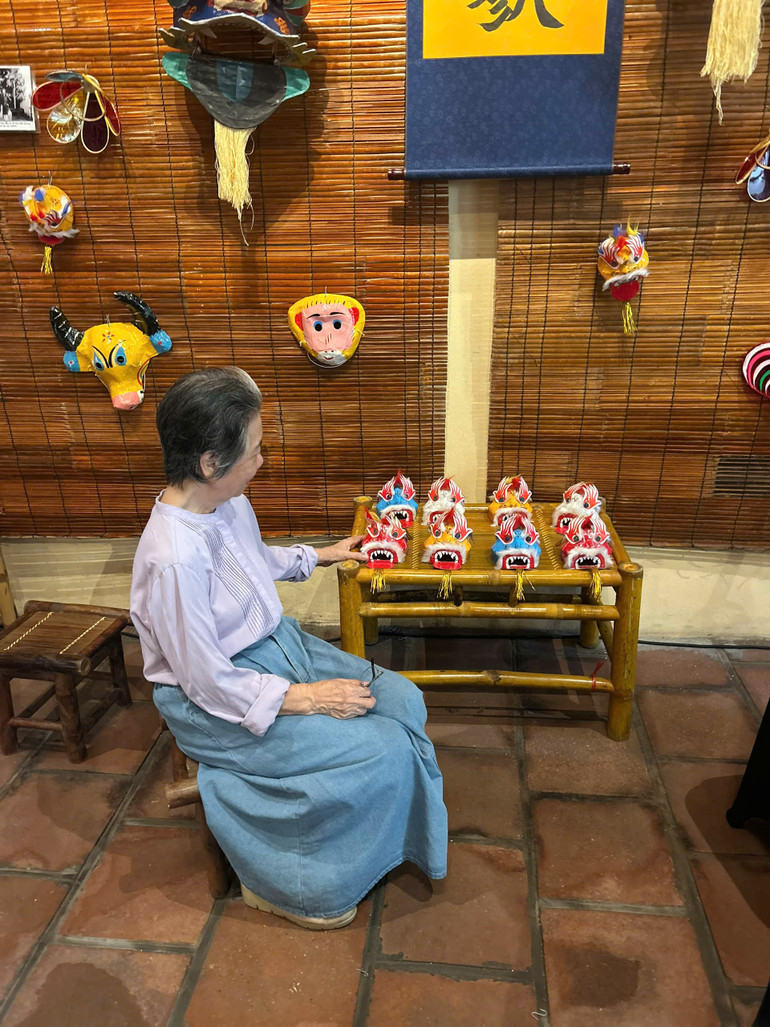
“I am very happy that today we not only recall the memory of the traditional Mid-Autumn Festival, but also look frankly at the reality with the changes and the dominance of imported toys. In my opinion, in the context of preserving and promoting national culture, it is important to take action to restore the old Mid-Autumn Festival. And for me, this project has really done that meaningful thing,” said writer Phuong Lien.
Nghiem Thu Duong (Cau Giay, Hanoi) shared: “Coming to the exhibition, I was very happy to experience the old Mid-Autumn atmosphere. I love Vietnamese culture more, and I am even happier because the traditional Mid-Autumn features are reintroduced to children like me and everyone else to see.”
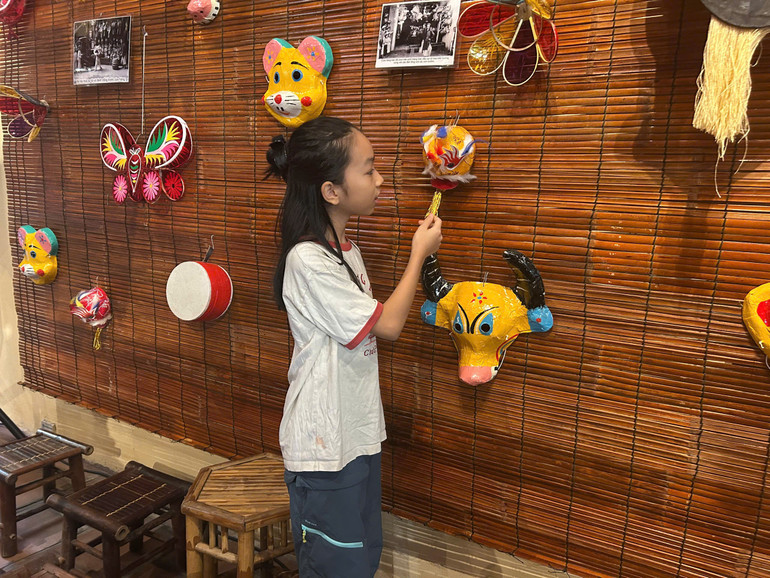
It can be affirmed that "Our Moon" not only recreates the memories of Mid-Autumn Festival, but also adds vitality to the heritage in today's life.
Source: https://nhandan.vn/trang-ta-tai-hien-trung-thu-xua-post911006.html


![[Photo] Solemn opening of the 12th Military Party Congress for the 2025-2030 term](https://vphoto.vietnam.vn/thumb/1200x675/vietnam/resource/IMAGE/2025/9/30/2cd383b3130d41a1a4b5ace0d5eb989d)

![[Photo] The 1st Congress of Phu Tho Provincial Party Committee, term 2025-2030](https://vphoto.vietnam.vn/thumb/1200x675/vietnam/resource/IMAGE/2025/9/30/1507da06216649bba8a1ce6251816820)
![[Photo] Panorama of the cable-stayed bridge, the final bottleneck of the Ben Luc-Long Thanh expressway](https://vphoto.vietnam.vn/thumb/1200x675/vietnam/resource/IMAGE/2025/9/30/391fdf21025541d6b2f092e49a17243f)
![[Photo] President Luong Cuong receives President of the Cuban National Assembly Esteban Lazo Hernandez](https://vphoto.vietnam.vn/thumb/1200x675/vietnam/resource/IMAGE/2025/9/30/4d38932911c24f6ea1936252bd5427fa)
![[Photo] General Secretary To Lam, Secretary of the Central Military Commission attends the 12th Party Congress of the Army](https://vphoto.vietnam.vn/thumb/1200x675/vietnam/resource/IMAGE/2025/9/30/9b63aaa37ddb472ead84e3870a8ae825)


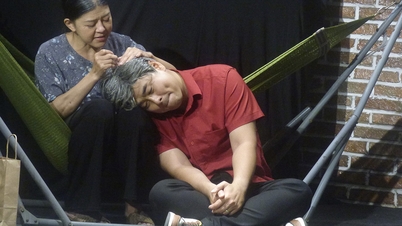

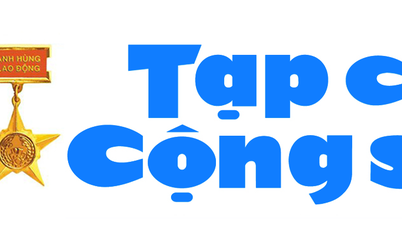

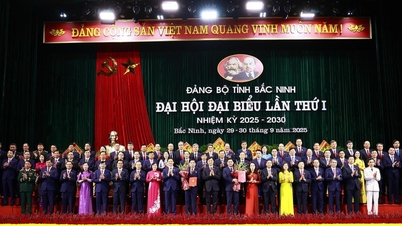







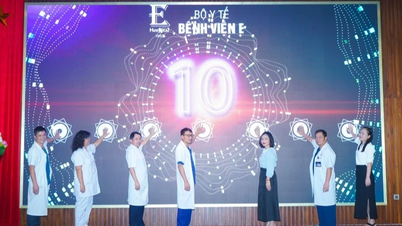

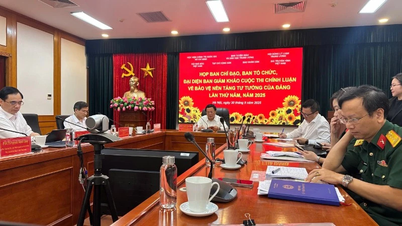
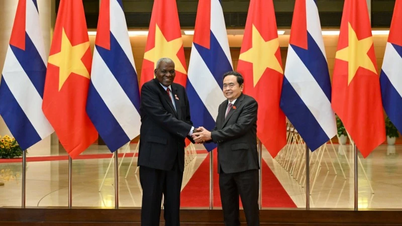
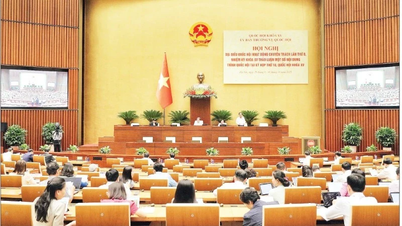































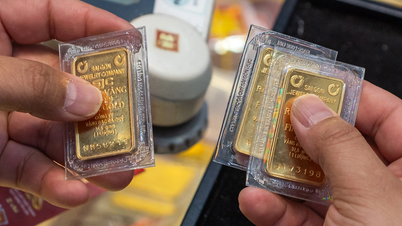








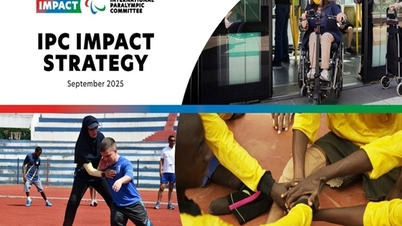



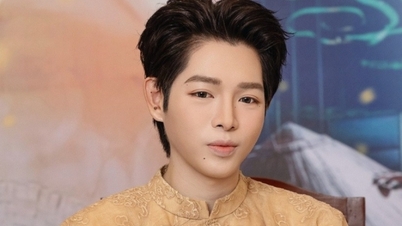

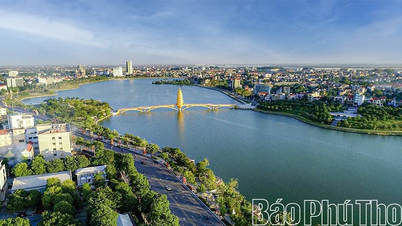

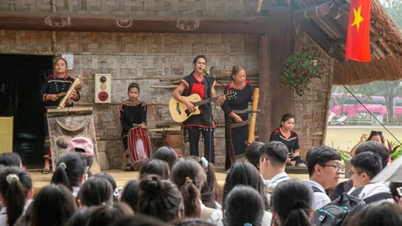
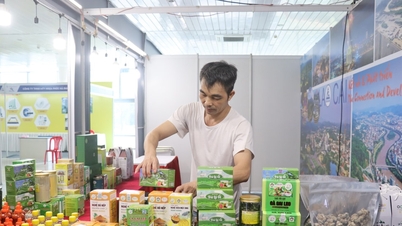












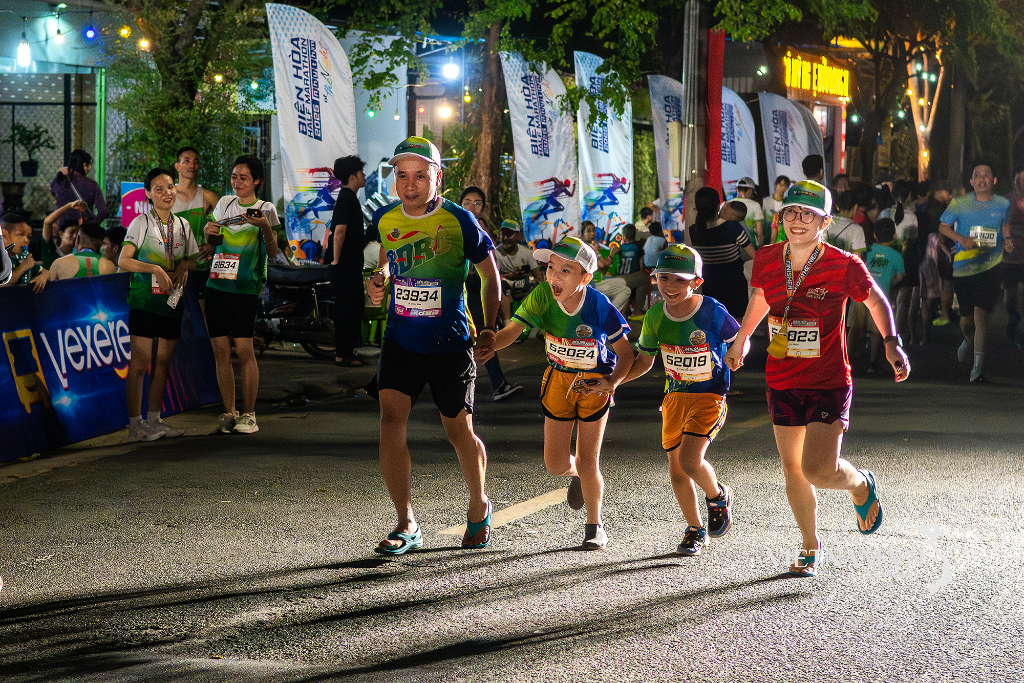


Comment (0)